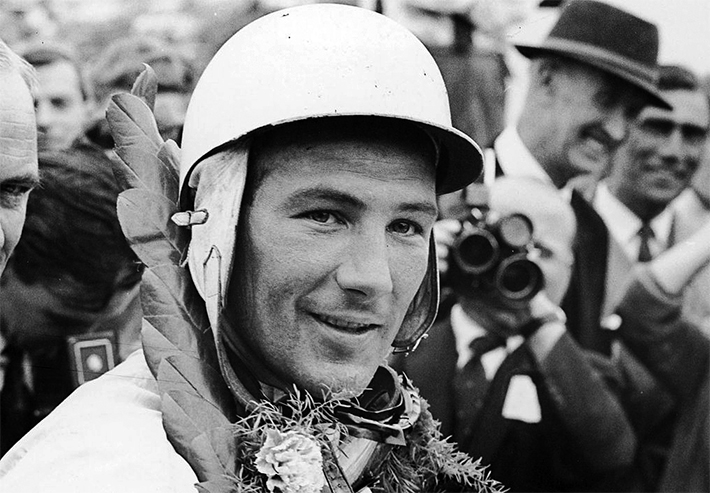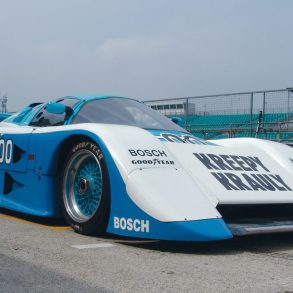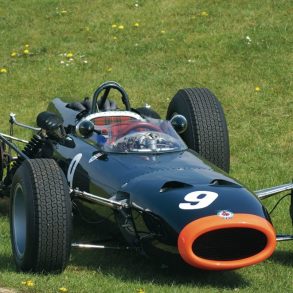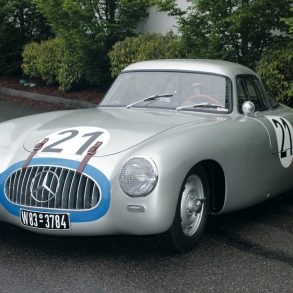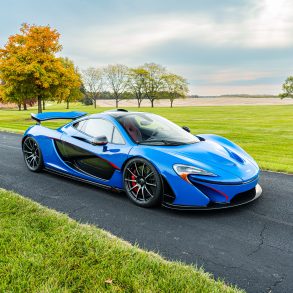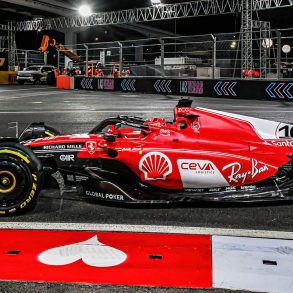Stirling Moss Biography
In the United States when you hear the name Mario Andretti the first image that comes to your mind is auto racing. The same can be said for Stirling Moss on the “other side of the pond.” Moss was born to racing with both parents involved in motorsports. His father Alfred Moss raced at Brooklands and when his studies took him to America he raced at Indianapolis. His mother competed in various trials and rallies. At the age of nine his father bought him an old Austin Seven in which the young Moss would drive around the fields surrounding their home.
The family was also involved in horses and competitive riding which saw Stirling and his sister Pat entering various horse show competitions. While his sister continued to compete Stirling’s heart lay more in horsepower of the mechanical variety. Despite being a natural athlete he suffered from various childhood health problems including a kidney affliction which made him medically unfit for National Service. This would later involve some controversy before his father had his medical records published. While motorsports ran through the family it was soon time to consider a proper career.
Like his compatriot Tony Brooks it was once thought that he would follow his dad’s footsteps and become a dentist and take over the family business. His father owned a lucrative business providing dental care to lower income patients which Stirling would call a “quick yank and out, next please” operation. But his indifferent school record made that impossible. He next tried a “crammer” school but this too failed to dislodge any innate brilliance. At age seventeen it was decided that the young Moss would go into the hotel trade. His training included serving as a waiter and later night porter – another occupation he was totally unqualified for.

Stirling was crestfallen but eventually his father relented and allowed Stirling to borrow his BMW sports car that he had recently purchased. It was in this BMW that Moss would start to compete in local speed trials. His first proper race car was a Cooper 500 which he used to compete in local hillclimbs. This car and its descendants formed the breeding grounds of future champions. Moss became aware of these cars through fellow competitors and went looking for the Cooper factory which he found in Surbiton. Factory may be to the wrong word to use as it was actually just a garage but one with a showroom that had on display one of the little jewels. Stirling contrived to drive past the showroom one day with his father as his unsuspecting passenger. Remarking on the car in the showroom he impressed upon his father how wonderful it would be to race such a car as this. His father agreed that it would be so if only Stirling would assume most of the cost. Reduced to selling most of his worldly possessions he was still short of the £600 needed but on his 18th birthday his parents made up the difference. This would be the beginning of a long association which saw him driving Coopers on and off for much of his career.
Since all of the pre-war racing venues were no longer available racing in Britain was very much a small time affair, that is to all except the competitors. Great Britain was still feeling the effects of World War II with the rationing of Petrol, yet almost every weekend played host to some form of competition as most of the race cars used methanol. This tradition of numerous events every weekend continues to this day as any visitor to this country can attest. Britain is the center of motorsports because more of it is happening at any one time than anywhere else in the world and Moss would enter as many races as he could and began to win more than his share. His obvious racing talent finally convinced his parents where his future lay if they needed any convincing as his weekend races had long become family affairs. With this support group Moss was on his way driving and racing anything that he could get his hands on. This became a trademark of his success. In 1950 Moss got his first works team drive for HWM. Created by John Heath and George Abecassis, partners in Hersham & Walton Motors the team consisted of three four-cylinder Formula 2 cars. The team leader was the free spirited Lance Macklin.
Moss would learn his racing craft from HWM and lessons about life from Macklin. HVM’s chief mechanic was an Polish ex-serviceman by the name of Kovaleski who adopted the English name of Alf Francis and who would later become a legend himself. At the Monza Autodrome GP he was involved in a terrific dice with the veteran Ferrari driver Villoresi who later congratulated the young Moss on his skill. His record with HWM was uneven to say the least with the cars breaking down more often then not but Moss would remember this period as a great learning experience. During this time he also raced other cars including the Jaguar C-Type in which he won the sports car race leading up to the French Grand Prix. This would be the first win for a car using disk brakes.
In 1951 he was contracted to race for Ferrari at selected events but when practice began for the first race at Bari he was told unceremoniously that the car he supposed was his had been given to Taruffi. Deeply embarrassed he vowed to exact his revenge against the red cars. In 1955 driving for Mercedes alongside Fangio, he tasted his first victory at Aintree. In 1956 he drove a Maserati and won twice more. The following year although again pursued by Ferrari he chose to drive for the British Vandervell team. This decision to drive for British teams whenever possible may have cost him future World Championships. A telling example that shows the measure of this man happened in 1958 at the Grand Prix of Portugal. During the race Mike Hawthorn spun his car but was able to continue and eventually finished second. Which when added to his fastest lap gave him 7 points to Moss’ 8 for the win. Hawthorn though, was accused by the officials of breaking the rules by restarting in the opposite direction. Moss who witnessed the incident came to his rival’s defense and a relieved Hawthorn was able to keep his 7 points. Moss would eventually lose the championship to his rival by one point even though he bested his fellow countryman in race wins 4 to 1.
It makes one ponder what any of the current racers would do today in similar circumstances. Moss would continue to win against larger teams but the championship was always just beyond his reach. In 1962 a terrible accident at Goodwood would eventually force his retirement. To say that his career was in any way a failure is not to know of the achievements that were made in his name in such legendary races as the Targa Florio, Pescara and the Mille Miglia . At home in any type of car he partnered with journalist Denis Jenkinson to win the historic Mille Miglia in 1955, the first foreigners since Caracciola and the only Britons to ever do so. At the 24 Hours of Le Mans he was partnered with Fangio in the lead Mercedes, Neubauer rightly believing that if they were to race in separate cars they would race each other to the possible determent of finish the endurance race. While leading the race they had to withdraw with the rest of the team after tragedy struck and 78 spectators lay dead. The result of a racing accident involving one of the Mercedes.
Moss was considered by many as being the first modern professional driver who raced for the love of the sport but also was intent on earning a sizable income. Staying in top physical shape he would travel all over the world to race. He was not above haggling for more appearance money and between races he would work at his home office dealing with correspondence, managing endorsements or recording his thoughts for his latest book. He had begun writing books about the sport and would later comment that when he would race in a particular country the sales of his book there would increase. This would help to increase his fame and conversely the amount of money he could require in exchange for his appearance. He courted endorsements as no other driver of his day and was sometimes ridiculed for this when in truth he was just ahead of his time. In the end he was a racer who enjoyed driving all sorts of cars and raced only to win.
Moss still keeps track of the current Grand Prix scene and is not hesitant to voice his opinion on current circuit design and their vast run-off areas and ubiquitous chicanes.
“To race a car through a turn at maximum speed, is difficult”, he said, “but to race a car at maximum speed through that same turn when there is a brick wall on one side and a precipice on the other – Ah, that’s an achievement.”




















